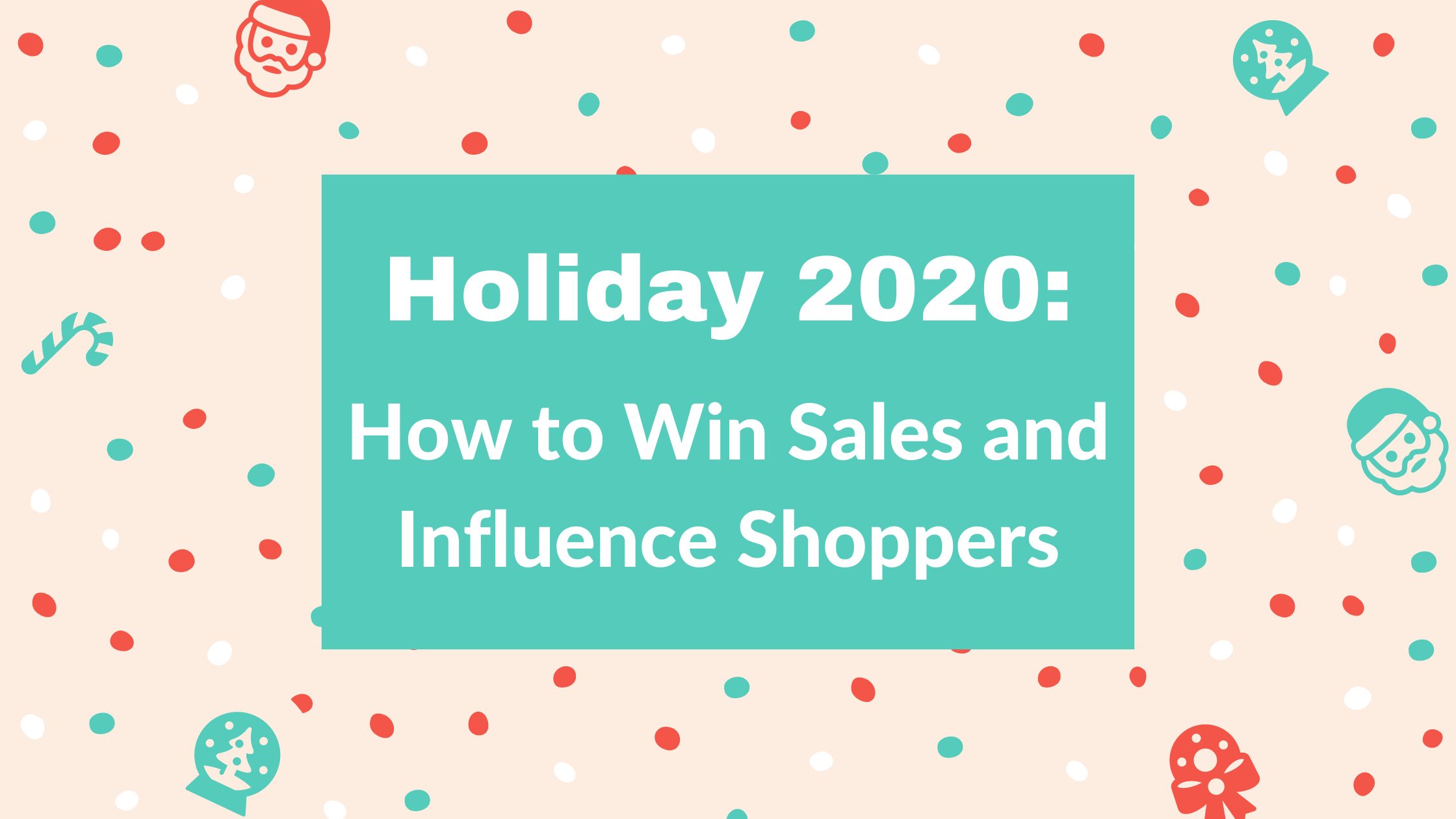2020 will go down in history as the year of unexpected and unwelcome news. However, one surprising bright spot was that retail sales did not plummet. Year over year, general retail sales actually rose by 2.7% and grocery sales skyrocketed by a whopping 12.6% annual increase.
These trends leave most cautiously optimistic that 2020’s holiday sales will stay strong too.
That said, we do know that it’s a holiday shopping year unlike any other so the question on brand’s and retailer’s minds is: how best to prepare?
How Will Retailers Prepare?
Retailers have gone to great lengths to keep the public safe and still shopping. Many of these measures will extend to the holiday season to keep up with the expected surge.
No Heavy Foot Traffic
Retailers don’t want the normal mass of shoppers, breathing all over each other and crowding the aisles. Instead, they’ll focus on minimizing risk and one way to do that is to minimize foot traffic.
This could look like one-way aisles, limits on the number of visitors allowed, and other social distancing measures.
Start Shopping Earlier Than Ever
The most effective way to keep people at arm’s length is to simply have fewer people in the store. But to avoid losing sales, that means shopping must start earlier than the typical 3-4 weeks of holiday promotions.
This year, expect an extended push from late September all the way through the end of 2020, topping out at about 10 weeks of holiday-themed shopping.
Online Sales
Of course, online sales will be a heavily relied upon channel. For newer brands, this can be a great way to get a foot in the door at a major retailer. And, for established brands, it’s a great way to maximize potential sales.
We know how retailers are preparing but how will brands position themselves for a successful season?
Standing Out On In-Store Shelves
Foot traffic might be lighter this year, which makes it even more important to have products that stand out. From understanding what shoppers are thinking to a carefully executed strategy, brands are already preparing for the most important shopping season of the year.
Consumer Considerations
Consumers are more budget-conscious this year. Despite retail sales holding steady, 52% of U.S. consumers have reduced their spending.
Even those with cash to burn are likely to be entering a store with a specific goal in mind. There will be far fewer “browse-and-pick-up-something-fun” shoppers.
To meet the changed behavior, brands must differentiate themselves from the competition at every buying stage but especially on-shelf.
How Brands Can Prepare
First, look at your entire marketing strategy. Can your item be the reason someone’s going into the store? Digital ads can spark in-store intent.
But if your would-be buyer is already in the store and doesn’t intend to purchase your product, there are still ways to appeal to them.
Here are 4 tactics that can help brands sell in-store products:
1 – Bundling
Who doesn’t love opening a beautiful gift that actually has more gifts inside? Consider hard or soft bundling your products together into themed offerings to make them more compelling. For instance, many people moved this year so a home warming bundle might include new coasters, a picture frame, and a matching pillow. Whatever you produce, see how your offerings could fit together to be more enticing.
With people staying in more this winter, build that into your packaging and positioning. “Stay-at-home” bundles for kids are sure to make parents say, “yes please!”
2 – IRCs
Deals, deals, deals. We all love a deal. Place Instant Redeemable Coupons (IRCs) on your items so customers can easily see their potential savings. 90% of consumers are more likely to purchase if they see an offer of instant savings.
This tactic is especially interesting this year when people are seeking to get more bang for their buck.
3 – In-Store Signage
Be bold and creative. Use in-store signage to drive precious foot traffic your direction. Keep it simple and clear and when possible, exciting, and intriguing. Before using signage that worked in the past, be sure to check it against today’s retail climate. Does the messaging still resonate? Do the images work in 2020?
4 – Displays That Wow
Window shopping and the holidays feel like they go hand-in-hand. Replicate the feeling of walking down the streets of New York and peering into magical store windows within your own retail partners by paying extra attention to your displays.
People want an experience and, if we’re being honest, distraction. Create a unique, unexpected surprise for in-store shoppers and ignite some holiday cheer (and hopefully purchases) with your displays.
Don’t Forget About Back-End Operations
Your product strategy could glow on the shelves and be the “it” buy of the season but if you’re not in stock due to incorrect counts or stocking frequency, you will not maximize the opportunity.
Having a retail merchandising partner, like RMS, can help you make sure the in-store marketing and operational side of the holidays is a well-oiled machine. The last thing brands need this year are lost sales because of errors in retail execution.
Retail merchandisers offer a wide range of services that help brands stand out and sell out at big-box retailers like Target.
For example, here are some of the services that RMS provides:
- Endcap and Display Management
- Instant Redeemable Coupons
- ISM Execution and Maintenance
- Perishables Maintenance
- Planogram Maintenance
- Reset & Revision Audits
- Scan-Based Trading Management
Though the 2020 holiday season may look different this year, there’s every reason for retail optimism. Careful planning and creative solutions will ensure that brands, retailers, and consumers will have a merry holiday.
Do you need a retail merchandising partner? We’d love to talk with you to see if we’re your perfect fit.

